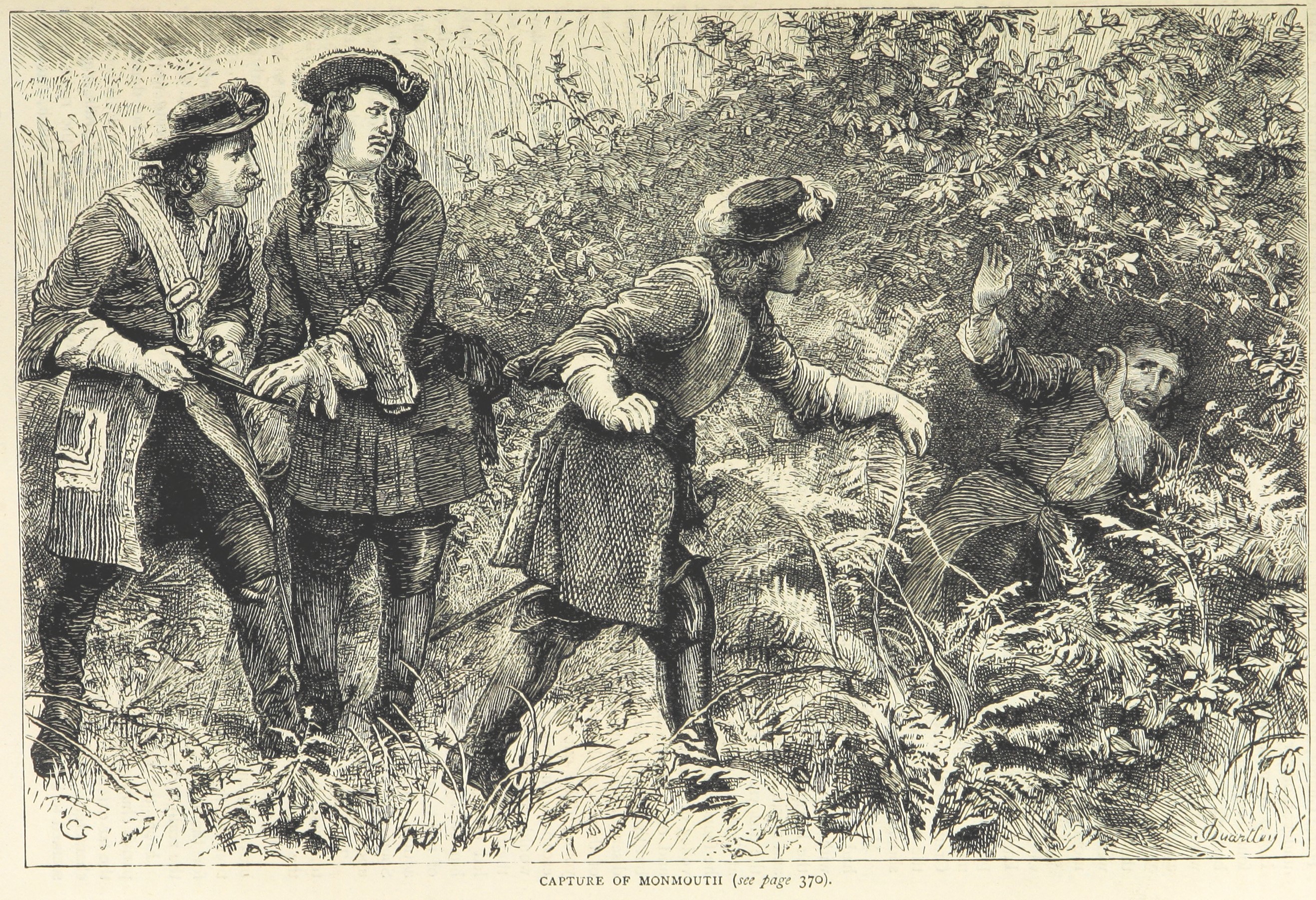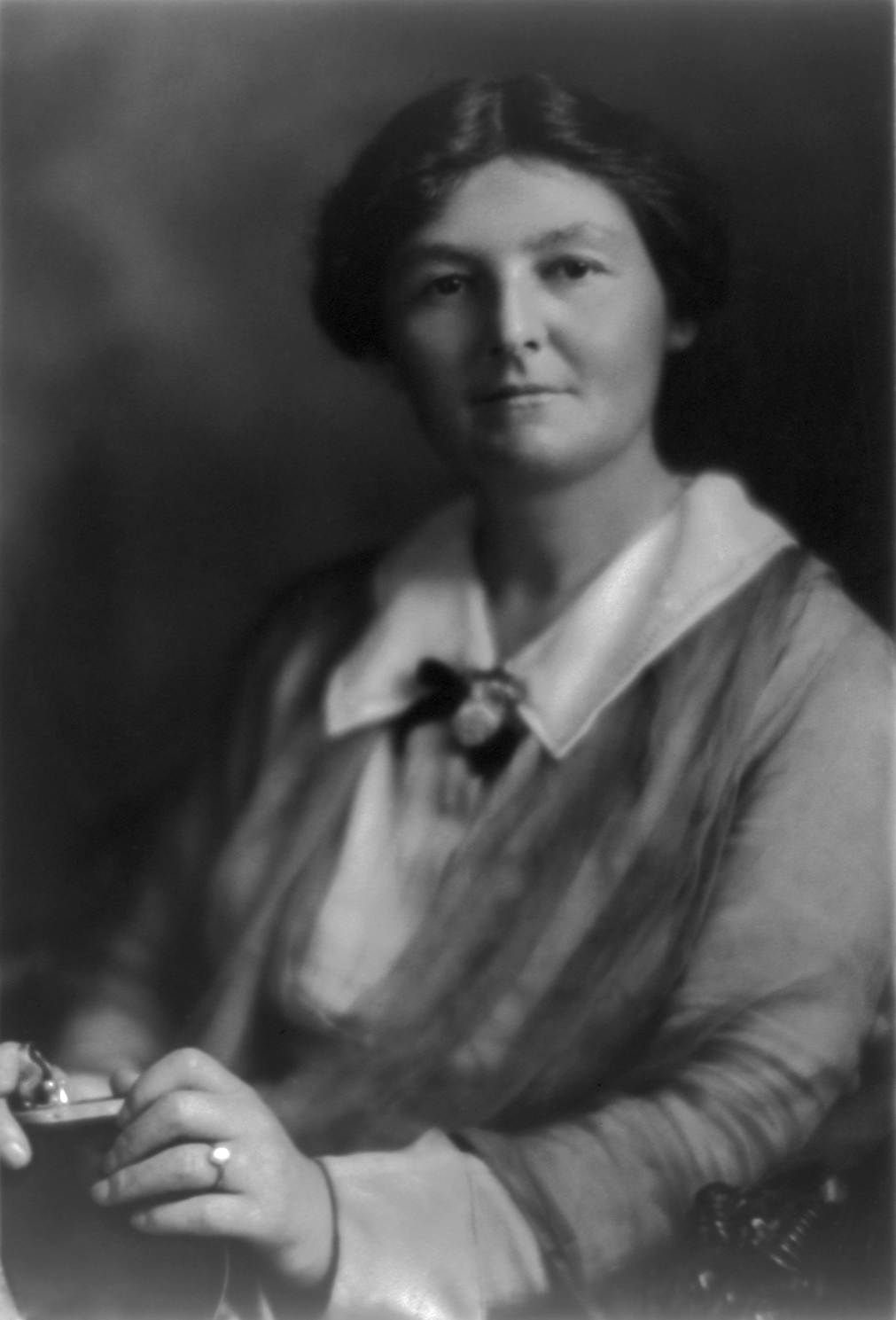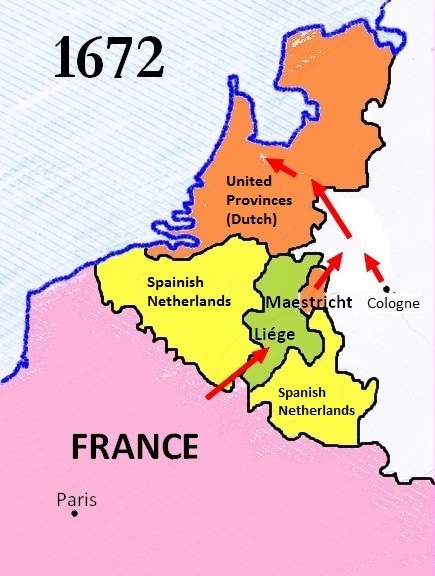|
Ralph Montagu
Ralph Montagu, 1st Duke of Montagu (24 December 1638 – 9 March 1709) was an English courtier, diplomat, politician and peer. Background Ralph Montagu was the second son of Edward Montagu, 2nd Baron Montagu of Boughton (1616–1684), and Anne Winwood, daughter of the Secretary of State Ralph Winwood. The peerage of his father was one of several granted in the seventeenth century to different members of the Montagu family. Sir Edward Montagu, Chief Justice of the King's Bench in the time of Henry VIII, was grandfather of the 1st Earl of Manchester, and of the 1st Baron Montagu of Boughton (1562–1644), who was imprisoned in the Tower by the Parliament on account of his loyalty to Charles I. The eldest son of the latter, Edward, who succeeded him as the 2nd Baron, took the side of the Parliament in the Civil War, and was one of the lords who conducted the king from Newark-on-Trent to Holmby House in January 1647, after he was handed over by the Scots, to whom he had initia ... [...More Info...] [...Related Items...] OR: [Wikipedia] [Google] [Baidu] |
John Montagu, 2nd Duke Of Montagu
Major-General John Montagu, 2nd Duke of Montagu, (1690 – 5 July 1749), styled Viscount Monthermer until 1705 and Marquess of Monthermer between 1705 and 1709, was a British Army officer, courtier and the fifth Grand Master of the Premier Grand Lodge of Freemasonry. Life Montagu was born in 1690. He received private tuition as a child and also went on a grand tour of Italy and France with Pierre Sylvestre in his formative years. When he was 15, on 17 March 1705, John was married to Lady Mary Churchill, daughter of John Churchill, 1st Duke of Marlborough, and Sarah Churchill, Duchess of Marlborough. His in-laws were among the wealthiest and most powerful families in Europe at the time. In 1709 he succeeded his father to the Dukedom of Montagu. On 23 October 1717, Montagu was admitted a Fellow of the Royal College of Physicians. He was made a Knight of the Garter in 1719, and was made Order of the Bath, a Fellow of the Royal Society in 1725, and a Grand Master of the ... [...More Info...] [...Related Items...] OR: [Wikipedia] [Google] [Baidu] |
Charles II Of England
Charles II (29 May 1630 – 6 February 1685) was King of Scotland from 1649 until 1651 and King of England, Scotland, and King of Ireland, Ireland from the 1660 Restoration of the monarchy until his death in 1685. Charles II was the eldest surviving child of Charles I of England, Scotland and Ireland and Henrietta Maria of France. After Charles I's execution at Palace of Whitehall, Whitehall on 30 January 1649, at the climax of the English Civil War, the Parliament of Scotland proclaimed Charles II king on 5 February 1649. However, England entered the period known as the English Interregnum or the English Commonwealth with a republican government eventually led by Oliver Cromwell. Cromwell defeated Charles II at the Battle of Worcester on 3 September 1651, and Charles Escape of Charles II, fled to mainland Europe. Cromwell became Lord Protector of England, Scotland and Ireland. Charles spent the next nine years in exile in France, the Dutch Republic and the Spanish Netherlands. ... [...More Info...] [...Related Items...] OR: [Wikipedia] [Google] [Baidu] |
Elizabeth Percy, Countess Of Northumberland
Elizabeth Percy, Countess of Northumberland (''née'' Wriothesley; 1646 – 19 September 1690), was a British courtier. She was one of the Windsor Beauties, painted by Sir Peter Lely. Origins She was a daughter of Thomas Wriothesley, 4th Earl of Southampton (1607-1667) by his wife Lady Elizabeth Leigh, daughter of Francis Leigh, 1st Earl of Chichester. Marriages and progeny She married twice: *Firstly on 23 December 1662 she married Joceline Percy, 11th Earl of Northumberland (1644-1670), of Petworth House in Sussex, and owner of vast estates elsewhere in England. She traveled with her husband to Italy, where he was taken ill and died in Turin in 1670. By Northumberland she had two children: **Henry Percy, Lord Percy (1668–1669), who predeceased his father and died an infant. **Elizabeth Seymour, Duchess of Somerset, Lady Elizabeth Percy (1667–1722), who became following her brother's death the heiress of the great Percy estates and who at the age of 15 married (as her th ... [...More Info...] [...Related Items...] OR: [Wikipedia] [Google] [Baidu] |
William III Of England
William III (William Henry; ; 4 November 1650 – 8 March 1702), also known as William of Orange, was the sovereign Prince of Orange from birth, Stadtholder of County of Holland, Holland, County of Zeeland, Zeeland, Lordship of Utrecht, Utrecht, Guelders, and Lordship of Overijssel, Overijssel in the Dutch Republic from 1672, and List of English monarchs, King of England, Monarchy of Ireland, Ireland, and List of Scottish monarchs, Scotland from 1689 until his death in 1702. He ruled Great Britain and Ireland with his wife, Queen Mary II, and their joint reign is known as that of William and Mary. William was the only child of William II, Prince of Orange, and Mary, Princess Royal and Princess of Orange, Mary, Princess Royal, the daughter of King Charles I of England, Scotland, and Ireland. His father died a week before his birth, making William III the prince of Orange from birth. In 1677, he Cousin marriage, married his first cousin Mary, the elder daughter of his maternal u ... [...More Info...] [...Related Items...] OR: [Wikipedia] [Google] [Baidu] |
Huntingdonshire (UK Parliament Constituency)
Huntingdonshire was a United Kingdom constituencies, parliamentary constituency covering the county of Huntingdonshire in England. It was represented by two Member of Parliament (United Kingdom), members of Parliament in the House of Commons of England until 1707, then in the House of Commons of Great Britain from 1707 to 1800, and then in the House of Commons of the United Kingdom, House of Commons of the Parliament of the United Kingdom from 1801 to 1885. It was reconstituted as a single-member seat in 1918 and abolished once again in 1983. History Huntingdonshire returned two Knights of the Shire from 1290 to 1885 (apart from 1654 to 1659, when it returned three); when elections were contested, the Plurality-at-large voting, bloc vote system was used. Under the Redistribution of Seats Act 1885, it was divided between the two single-seat county divisions of Huntingdon (UK Parliament constituency), Huntingdon and Ramsey (UK Parliament constituency), Ramsey, with effect from t ... [...More Info...] [...Related Items...] OR: [Wikipedia] [Google] [Baidu] |
James Scott, 1st Duke Of Monmouth
James Scott, 1st Duke of Monmouth, 1st Duke of Buccleuch, (9 April 1649 – 15 July 1685) was an English nobleman and military officer. Originally called James Crofts or James Fitzroy, he was born in Rotterdam in the Netherlands, the eldest illegitimate son of Charles II of England with his mistress Lucy Walter. The Duke of Monmouth served in the Second Anglo-Dutch War and commanded English troops taking part in the Third Anglo-Dutch War before commanding the Anglo-Dutch brigade fighting in the Franco-Dutch War. He led the unsuccessful Monmouth Rebellion in 1685, an attempt to depose his uncle King James II and VII. After one of his officers declared Monmouth the legitimate king in the town of Taunton in Somerset, Monmouth attempted to capitalise on his Protestantism and his position as the son of Charles II, in opposition to James, who had become a Roman Catholic. The rebellion failed, and Monmouth was beheaded for treason on 15 July 1685. Biography Parentage and early life ... [...More Info...] [...Related Items...] OR: [Wikipedia] [Google] [Baidu] |
James II Of England
James II and VII (14 October 1633 – 16 September 1701) was King of England and Monarchy of Ireland, Ireland as James II and King of Scotland as James VII from the death of his elder brother, Charles II of England, Charles II, on 6 February 1685, until he was deposed in the 1688 Glorious Revolution. The last Catholic monarch of Kingdom of England, England, Kingdom of Scotland, Scotland, and Kingdom of Ireland, Ireland, his reign is now remembered primarily for conflicts over religion. However, it also involved struggles over the principles of Absolute monarchy, absolutism and divine right of kings, with his deposition ending a century of political and civil strife by confirming the primacy of the English Parliament over the Crown. James was the second surviving son of Charles I of England and Henrietta Maria of France, and was created Duke of York at birth. He succeeded to the throne aged 51 with widespread support. The general public were reluctant to undermine the principle ... [...More Info...] [...Related Items...] OR: [Wikipedia] [Google] [Baidu] |
Northampton (UK Parliament Constituency)
Northampton was a United Kingdom constituencies, parliamentary constituency (centred on the town of Northampton), which existed until 1974. It returned two Member of Parliament (United Kingdom), Members of Parliament (MPs) to the House of Commons of England until 1707, the House of Commons of Great Britain until 1800 and to the House of Commons of the United Kingdom, House of Commons of the Parliament of the United Kingdom until its representation was reduced to one member for the 1918 United Kingdom general election, 1918 general election. The constituency was abolished for the February 1974 United Kingdom general election, February 1974 general election, when it was replaced by the new constituencies of Northampton North (UK Parliament constituency), Northampton North and Northampton South (UK Parliament constituency), Northampton South. A former MP of note for the constituency was Spencer Perceval, the only British Prime Minister to be Assassination of Spencer Perceval, assas ... [...More Info...] [...Related Items...] OR: [Wikipedia] [Google] [Baidu] |
Barbara Palmer, 1st Duchess Of Cleveland
Barbara Palmer, 1st Duchess of Cleveland, Countess of Castlemaine ( ; – 9 October 1709), was an English royal mistress of the Villiers family and perhaps the most notorious of the many mistresses of King Charles II of England, by whom she had five children, all of them acknowledged and subsequently ennobled. Barbara was the subject of many portraits, in particular by court painter Sir Peter Lely. Barbara's first cousin, Elizabeth Villiers (later 1st Countess of Orkney 1657–1733), was the presumed mistress of King William III. Early life Born into the Villiers family as Barbara Villiers, in the parish of St Margaret's, Westminster, Middlesex, she was the only child of William Villiers, 2nd Viscount Grandison, a half-nephew of George Villiers, 1st Duke of Buckingham, and of his wife Mary Bayning, co-heiress of Paul Bayning, 1st Viscount Bayning. On 29 September 1643, her father died in the First English Civil War from a wound sustained on 26 July at the storming of B ... [...More Info...] [...Related Items...] OR: [Wikipedia] [Google] [Baidu] |
Thomas Osborne, 1st Duke Of Leeds
Thomas Osborne, 1st Duke of Leeds, (20 February 1632 – 26 July 1712) was an English Tories (British political party), Tory statesman. During the reign of Charles II of England, he was the leading figure in the English government for roughly five years in the mid-1670s. Osborne fell out of favour due to corruption and other scandals. He was Impeachment in the United Kingdom, impeached and eventually imprisoned in the Tower of London for five years until James II of England acceded in 1685. In 1688, he was one of the Invitation to William, Immortal Seven who invited William III of England, William of Orange to depose James II during the Glorious Revolution. Osborne was again the leading figure in England's government for a few years in the early 1690s before dying in 1712. Early life, 1632–1674 Osborne was the son of Sir Sir Edward Osborne, 1st Baronet, Edward Osborne, Baronet of Kiveton, Yorkshire, and his second wife Anne Walmesley, widow of Thomas Middleton; she was ... [...More Info...] [...Related Items...] OR: [Wikipedia] [Google] [Baidu] |
Master Of The Great Wardrobe
The King's Wardrobe, together with the Chamber, made up the personal part of medieval English government known as the King's household. Originally the room where the king's clothes, armour, and treasure were stored, the term was expanded to describe both its contents and the department of clerks who ran it. Early in the reign of Henry III the Wardrobe emerged out of the fragmentation of the '' Curia Regis'' to become the chief administrative and accounting department of the Household. The Wardrobe received regular block grants from the Exchequer for much of its history; in addition, however, the wardrobe treasure of gold and jewels enabled the king to make secret and rapid payments to fund his diplomatic and military operations, and for a time, in the 13th-14th centuries, it eclipsed the Exchequer as the chief spending department of central government. There were in fact two main Wardrobes for much of this period: around 1300 the confusingly named Great Wardrobe, responsible o ... [...More Info...] [...Related Items...] OR: [Wikipedia] [Google] [Baidu] |
Franco-Dutch War
The Franco-Dutch War, 1672 to 1678, was primarily fought by Kingdom of France, France and the Dutch Republic, with both sides backed at different times by a variety of allies. Related conflicts include the 1672 to 1674 Third Anglo-Dutch War and 1675 to 1679 Scanian War. In May 1672, France nearly overran the Netherlands, an event remembered in Dutch history as the ''Rampjaar'', or "Disaster Year". However, by late July the position had stabilised, while concern over French gains brought the Dutch support from Leopold I, Holy Roman Emperor, Emperor Leopold I, Habsburg Spain, Spain and Brandenburg-Prussia. Previously an ally of France, Kingdom of England, England Treaty of Westminster (1674), exited the war in February 1674. Now facing a war of attrition on several fronts, Louis XIV of France instead focused on strengthening French borders with the Spanish Netherlands and Rhineland, while a coalition led by William III of England, William of Orange sought to minimise any losses. ... [...More Info...] [...Related Items...] OR: [Wikipedia] [Google] [Baidu] |








